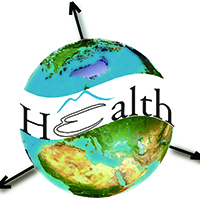Spatial patterns of the total mortality over the first 24 hours of life and that due to preventable causes

All claims expressed in this article are solely those of the authors and do not necessarily represent those of their affiliated organizations, or those of the publisher, the editors and the reviewers. Any product that may be evaluated in this article or claim that may be made by its manufacturer is not guaranteed or endorsed by the publisher.
Authors
This is an ecological study analysing spatial patterns of the total mortality over the first 24 hours of life and that due to preventable causes using data from the mortality information system (SIM) and live birth information system (SINASC) based on the municipalities of Pernambuco State, Brazil. The total mortality rates over the first 24 hours and that due to preventable causes were calculated for each municipality for the decades of 2000 to 2009 and for 2010 to 2019 to enable a comparison of the spatial patterns with spatial scan statistic used to identify clusters. Over the first 24 hours of life, a total of 13,571 deaths were reported, out of which 10,476 (77.2%) were preventable. The total mortality rate over the first 24 hours of life decreased from 5.5 in the 2000- 2009 period to 3.7 per 1000 live births in the following decade: a reduction of 32.7%, while the mortality rate due to preventable causes decreased from 4.4 to 2.8 per 1000 live births, a reduction of 36.7%. In the first decade, spatial exploratory analysis found three mortality rate clusters encompassing 56 municipalities over the first 24 hours of life. With respect to preventable causes over the first 24 hours of life, two mortality rate clusters were identified encompassing 41 municipalities. Risk areas for mortality over the first 24 hours of life were detected through spatial scan statistic. This method, directed towards uncovering the geographical distribution of deaths of very premature infants, can act as a tool for identifying priority areas to guide healthcare interventions.
How to Cite

This work is licensed under a Creative Commons Attribution-NonCommercial 4.0 International License.
PAGEPress has chosen to apply the Creative Commons Attribution NonCommercial 4.0 International License (CC BY-NC 4.0) to all manuscripts to be published.










